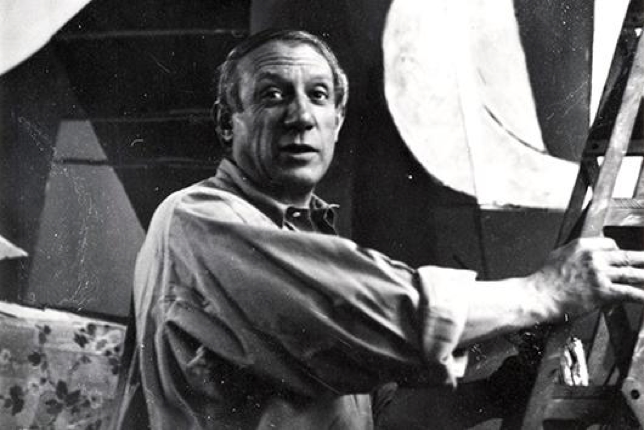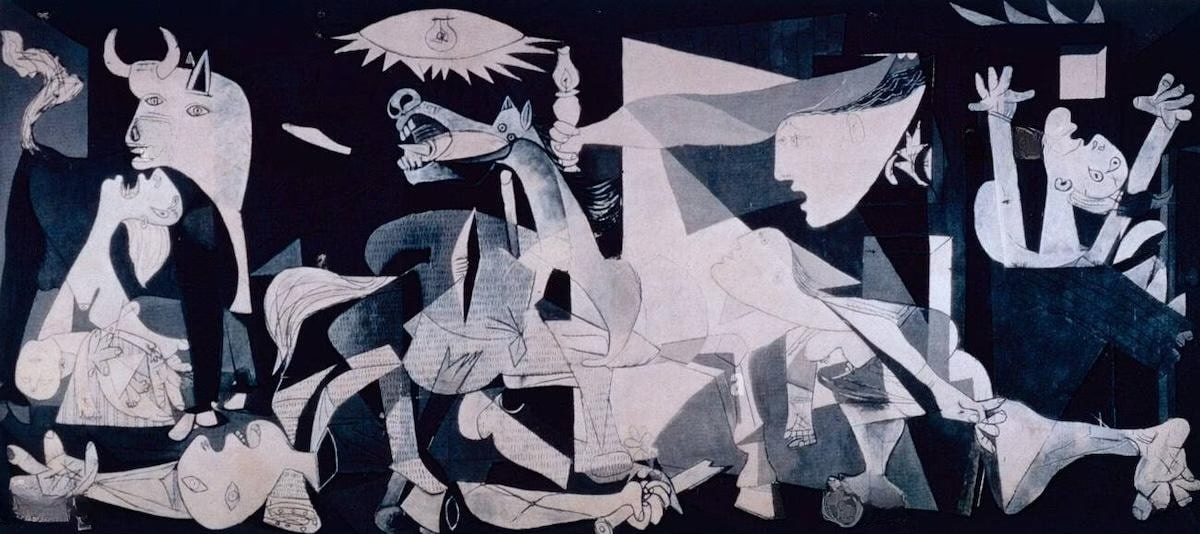Probably Picasso’s most famous work, Guernica shows the tragedies of war and the suffering it inflicts upon individuals, particularly innocent civilians.
In the spring of 1937, Picasso was working on a mural for the Paris Exhibition, set to take place in the summer of that year. The mural had been commissioned by the Spanish Republican government. After hearing about the bombing of Guernica, he abandoned his original idea and, on May 1, 1937, began work on Guernica.

Its creation was a long and complex process for Picasso. The artist spent more than three months on the painting, creating numerous preliminary sketches and studies before starting on the final work
Guernica is blue, black and white, 3.5 meters (11 ft) tall and 7.8 meters (25.6 ft) wide, a mural-size canvas painted in oil.
Guernica, Picasso’s powerful anti-war mural, has inspired countless artists with its raw emotion, bold symbolism, and fragmented forms. Its visual language became a timeless tool for confronting injustice, expressing solidarity, and pushing artistic boundaries.
















